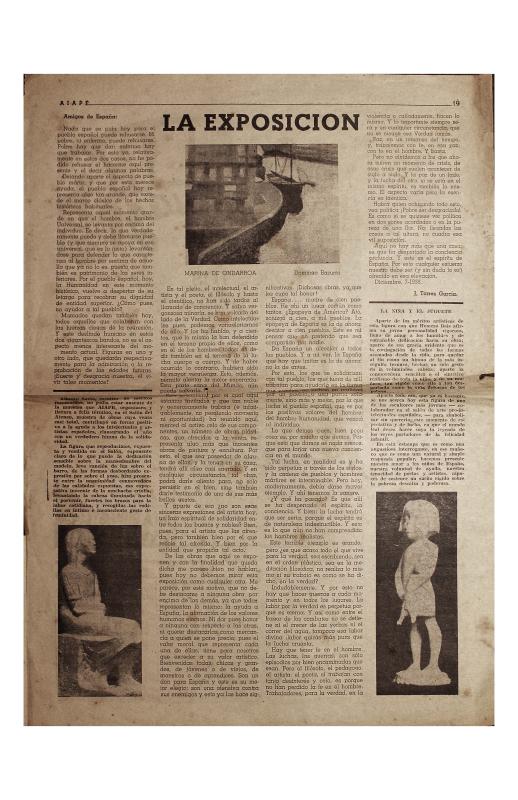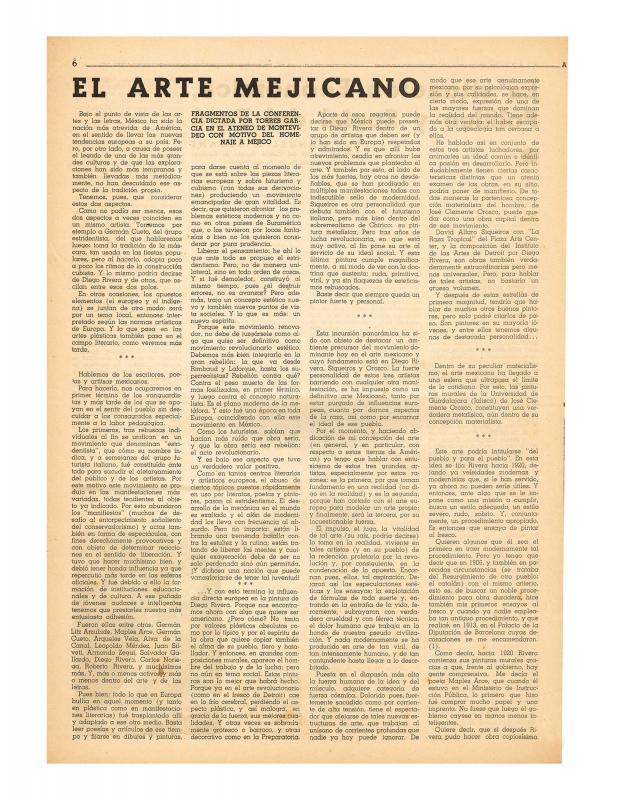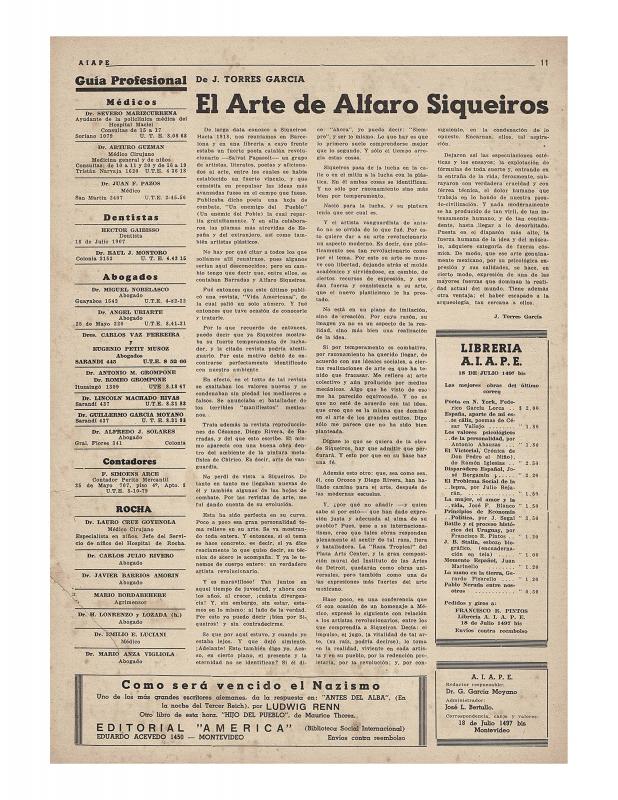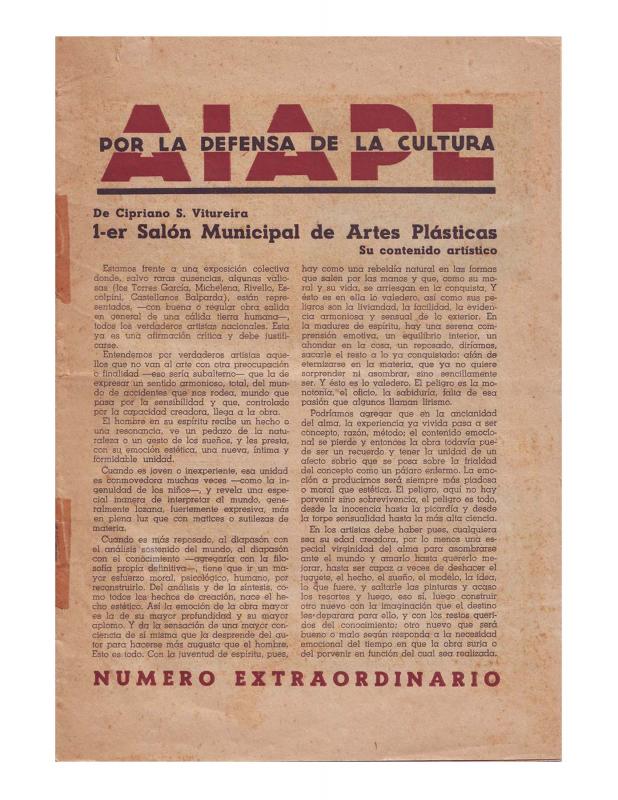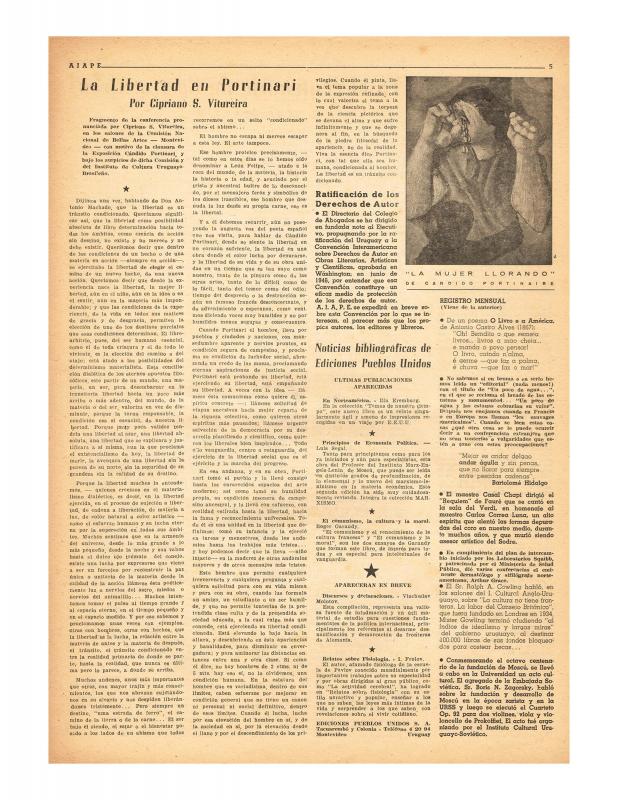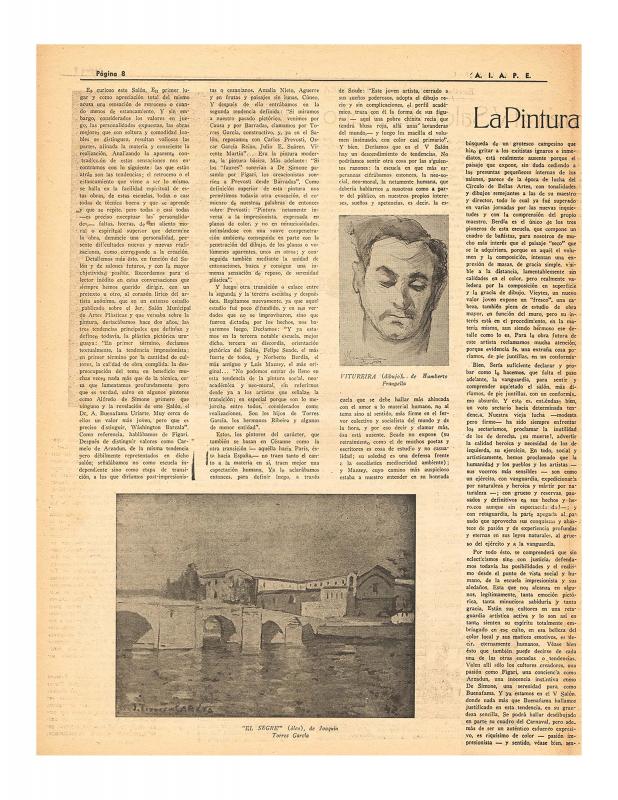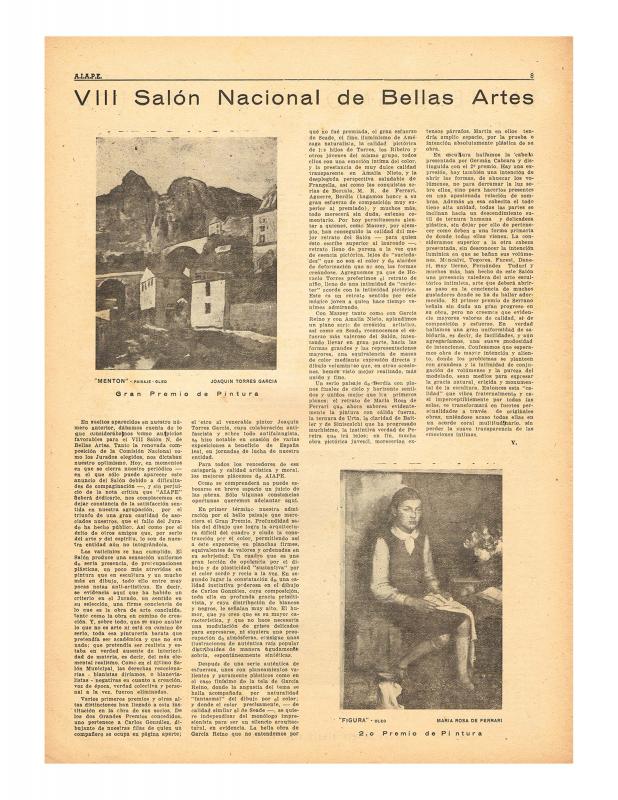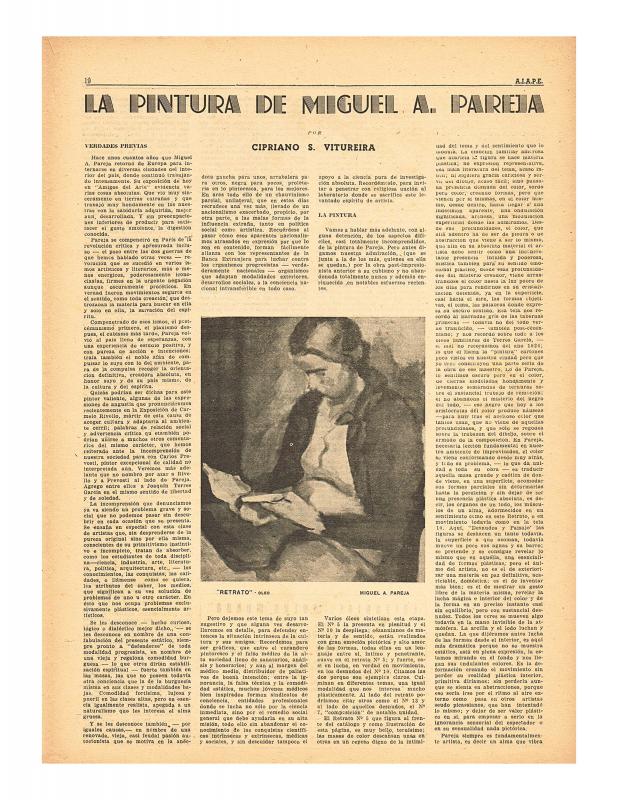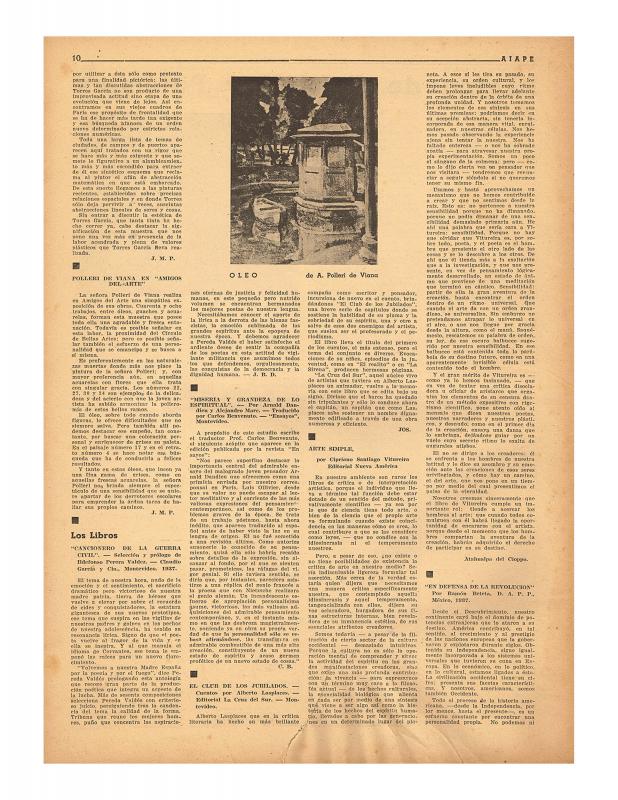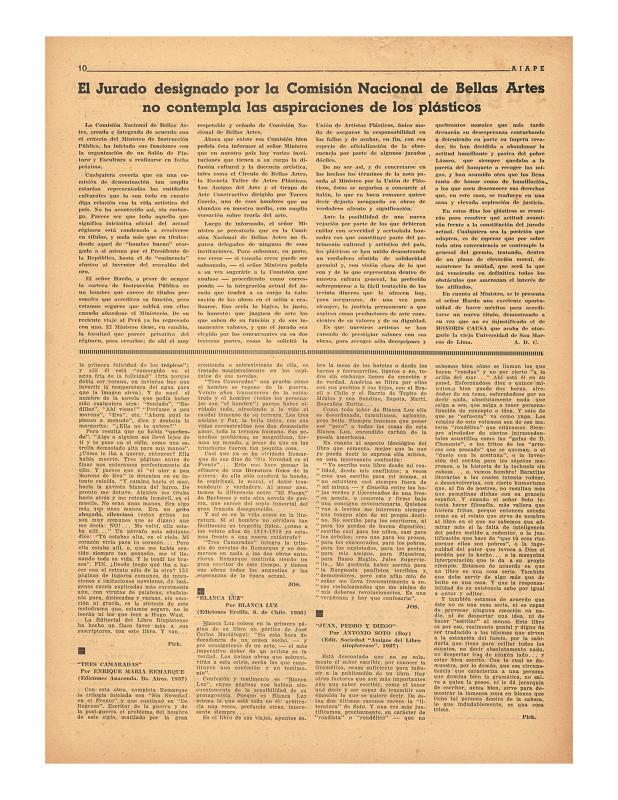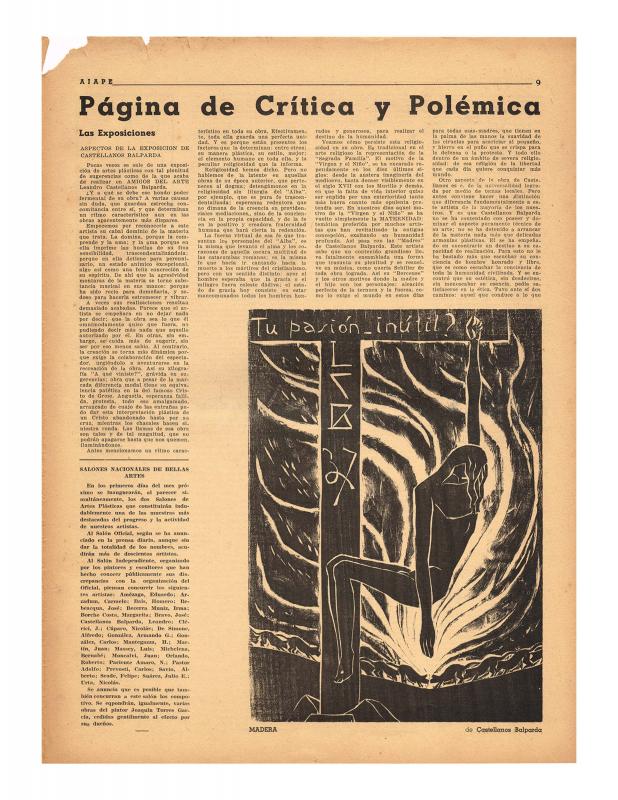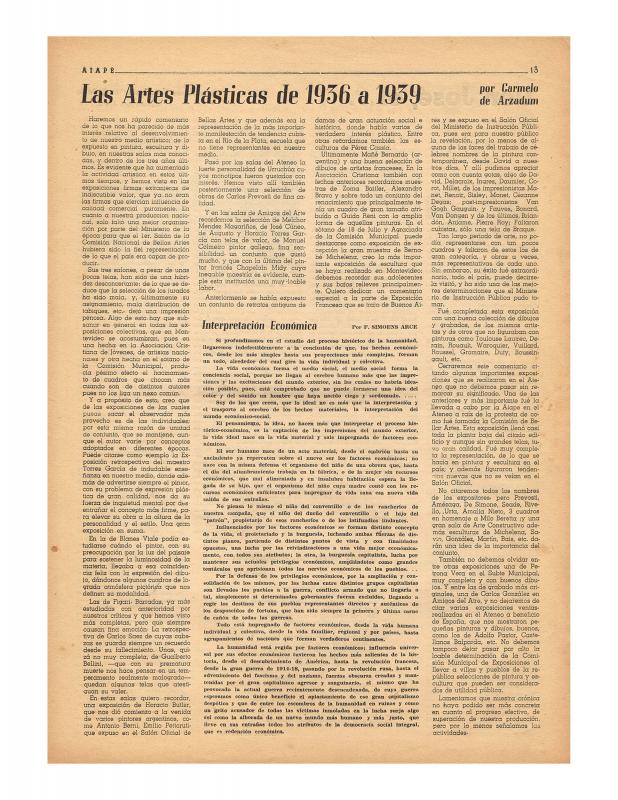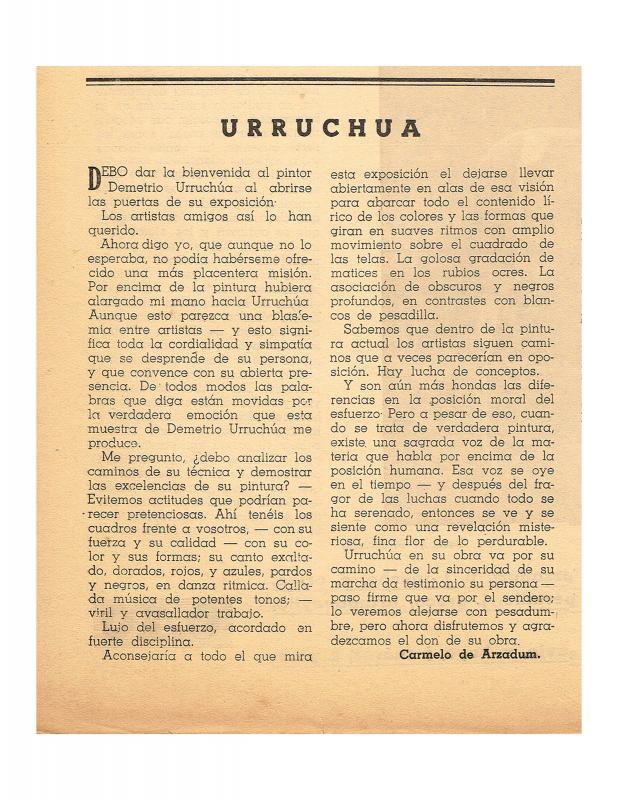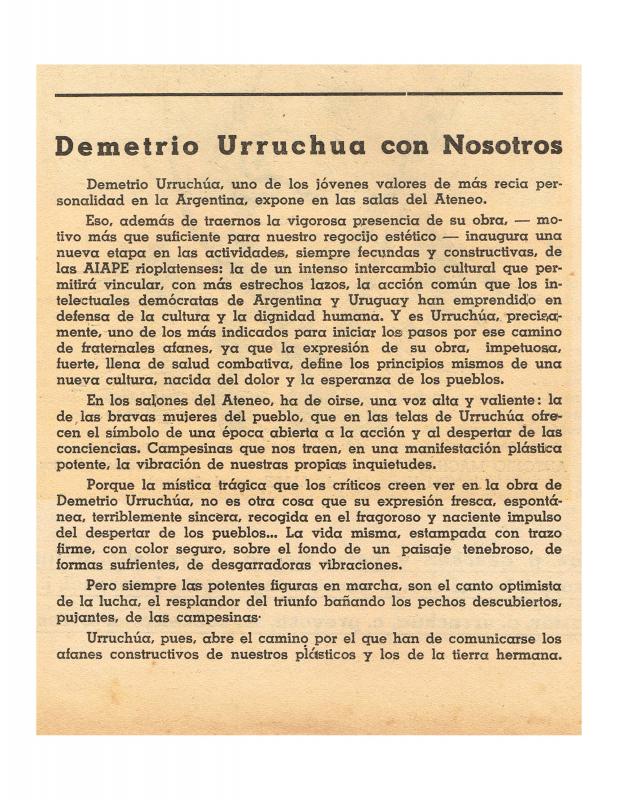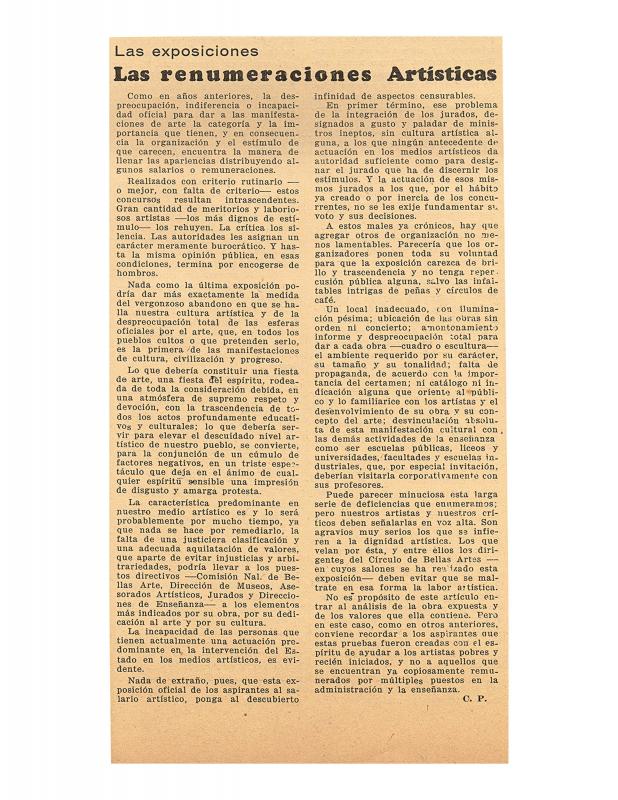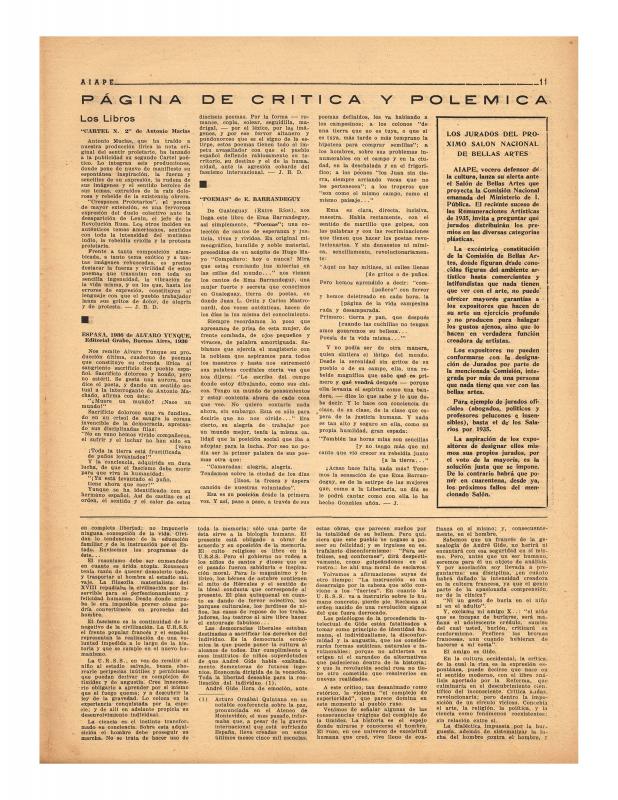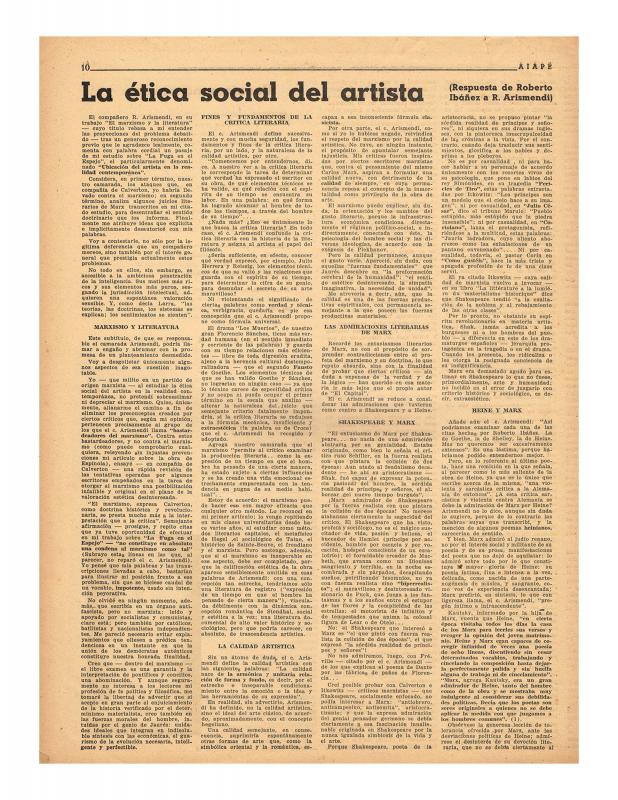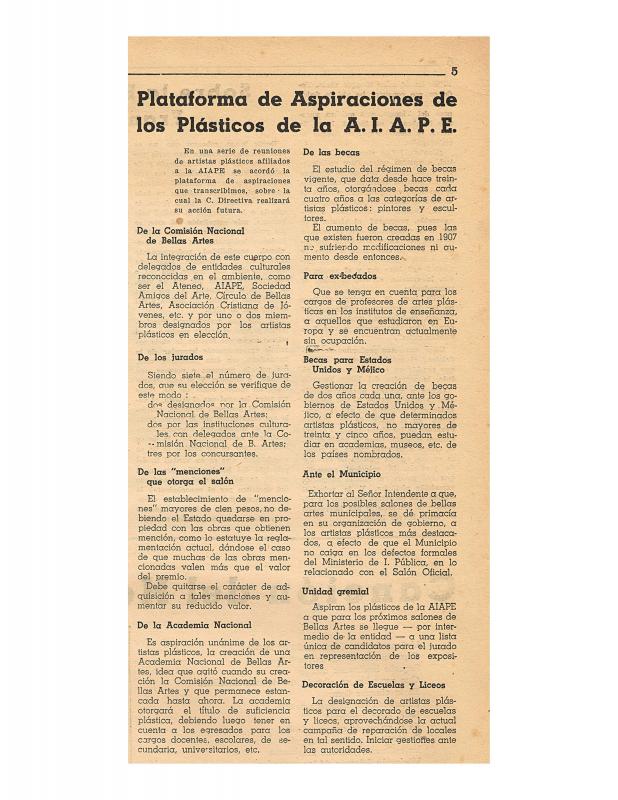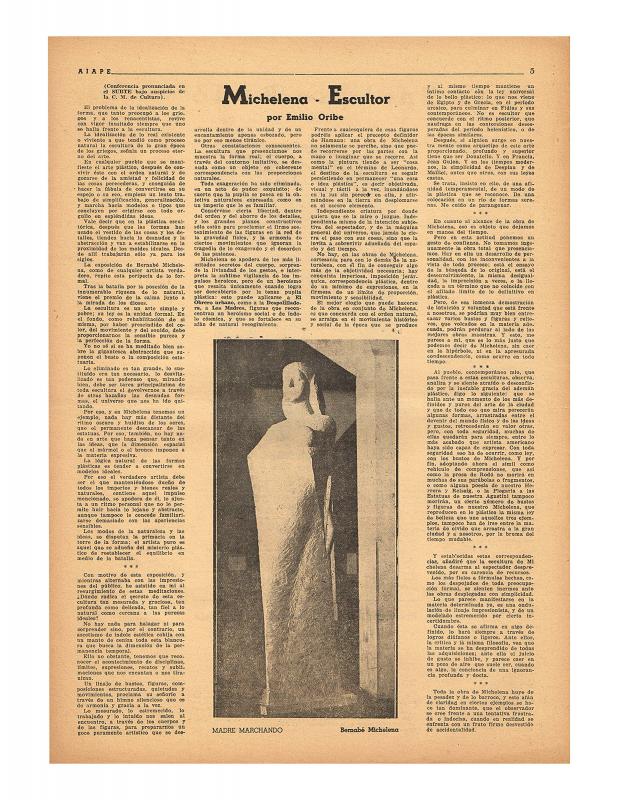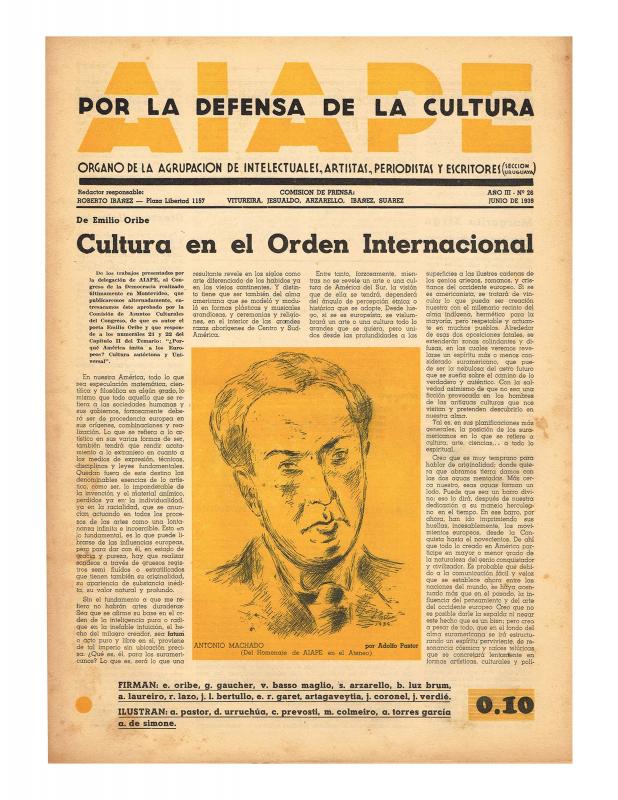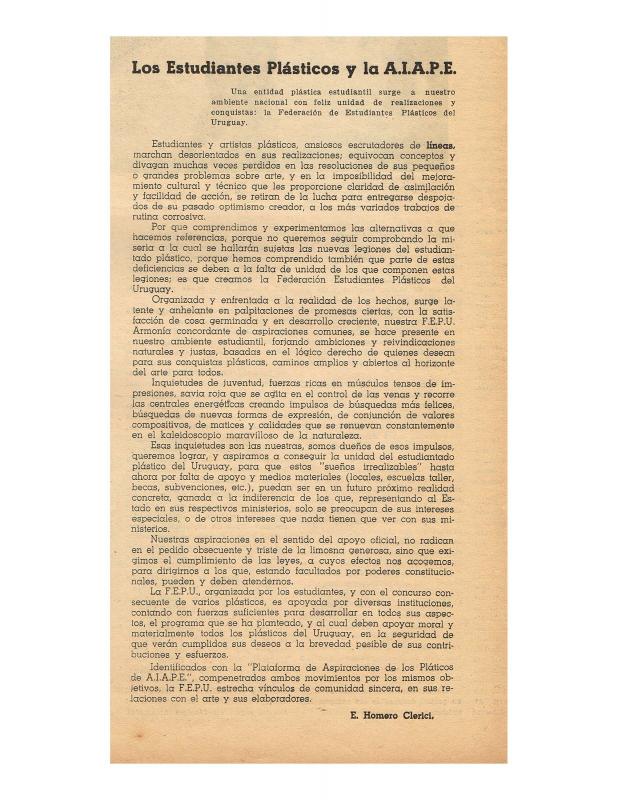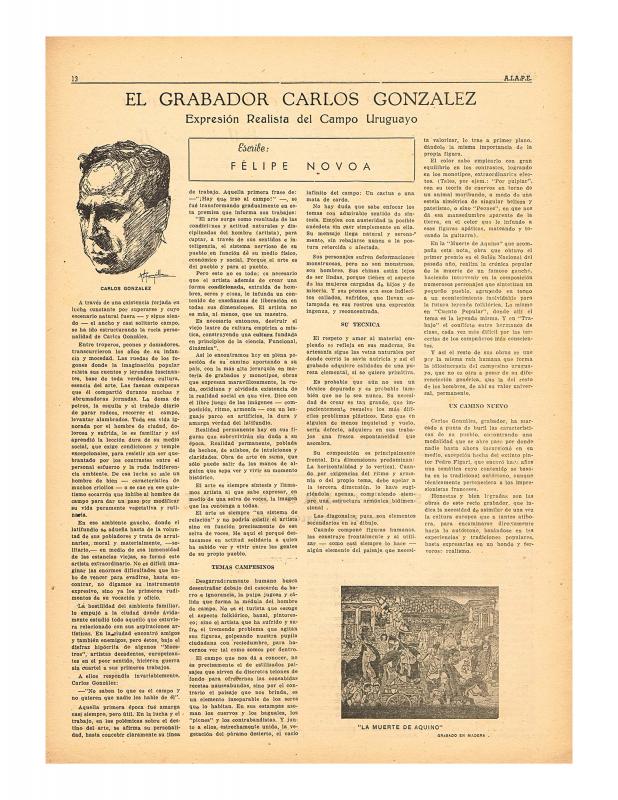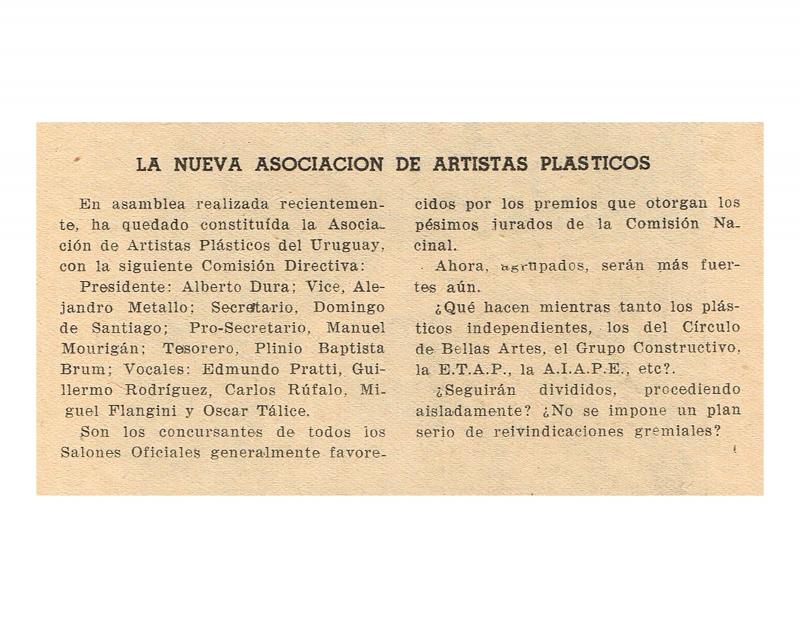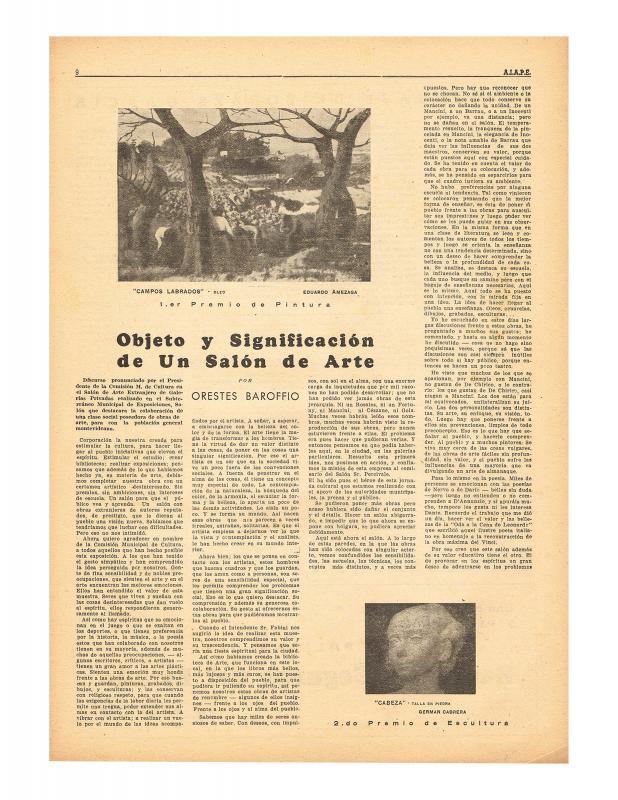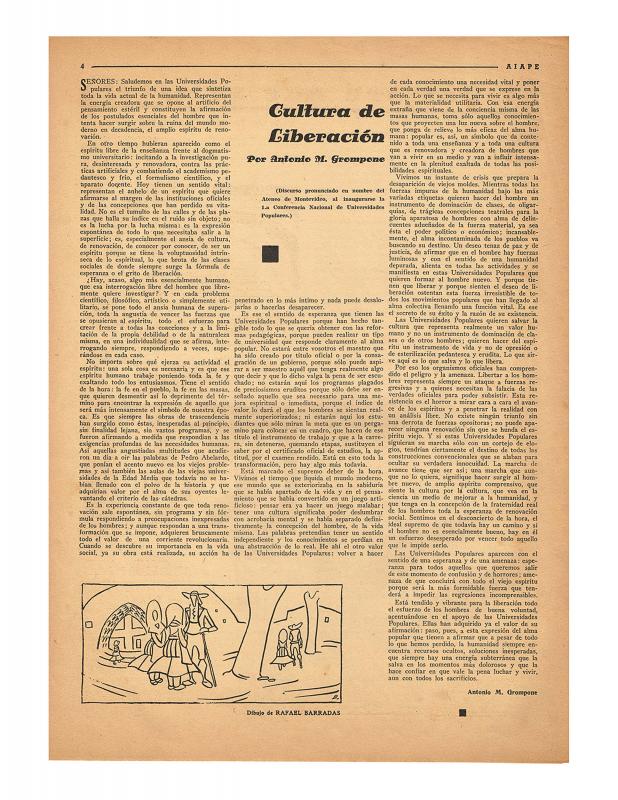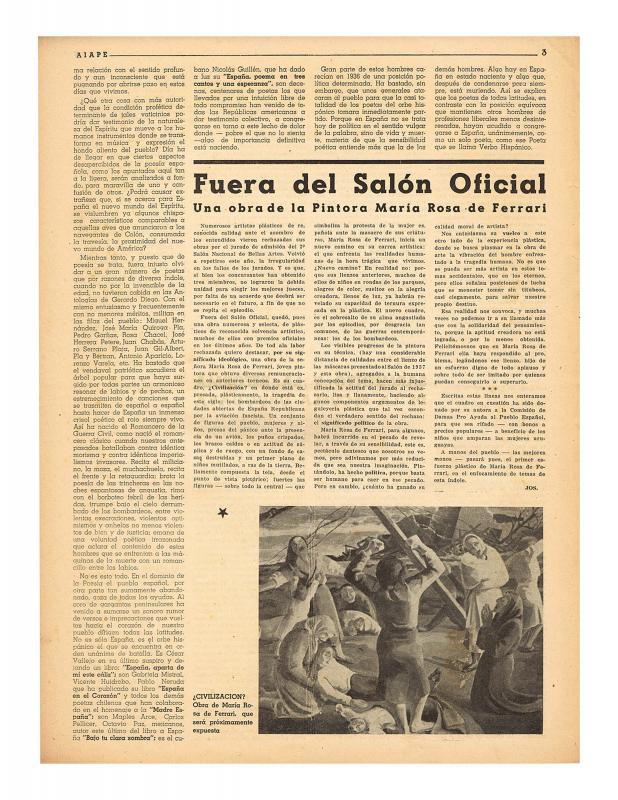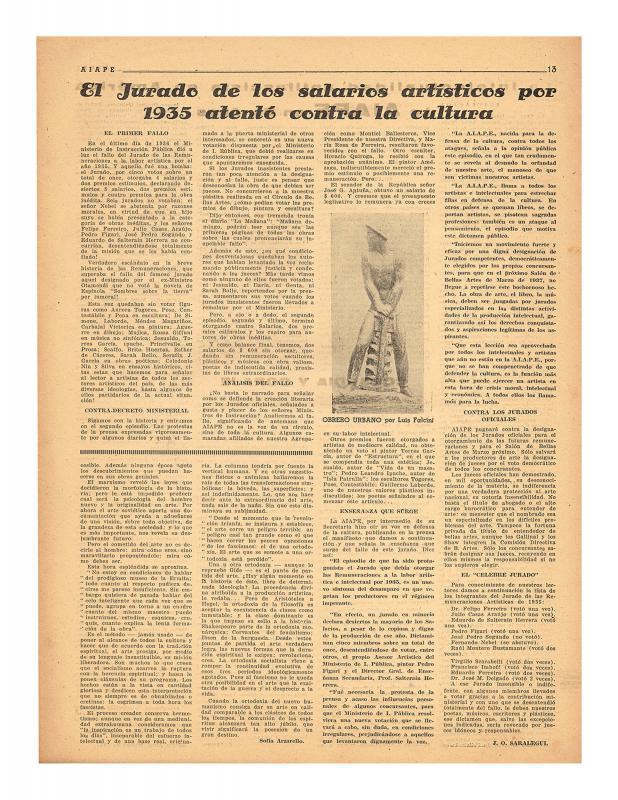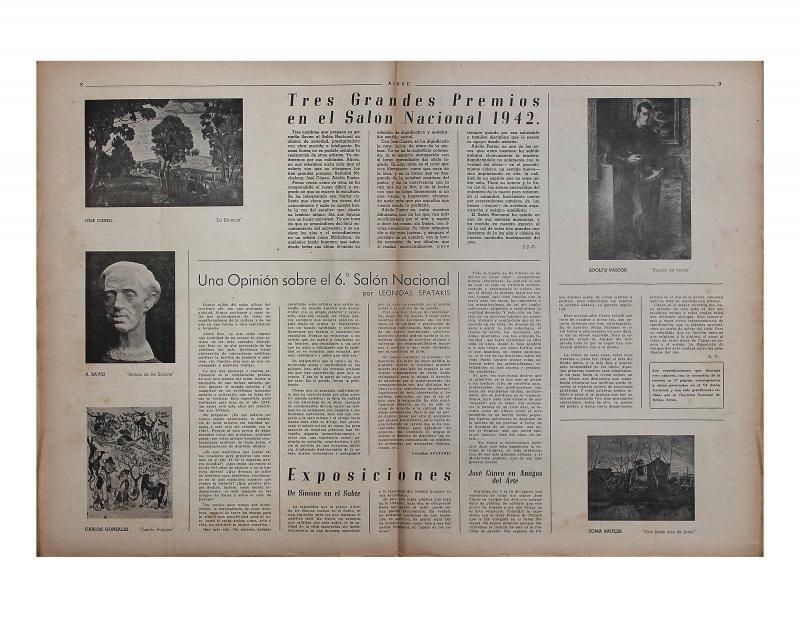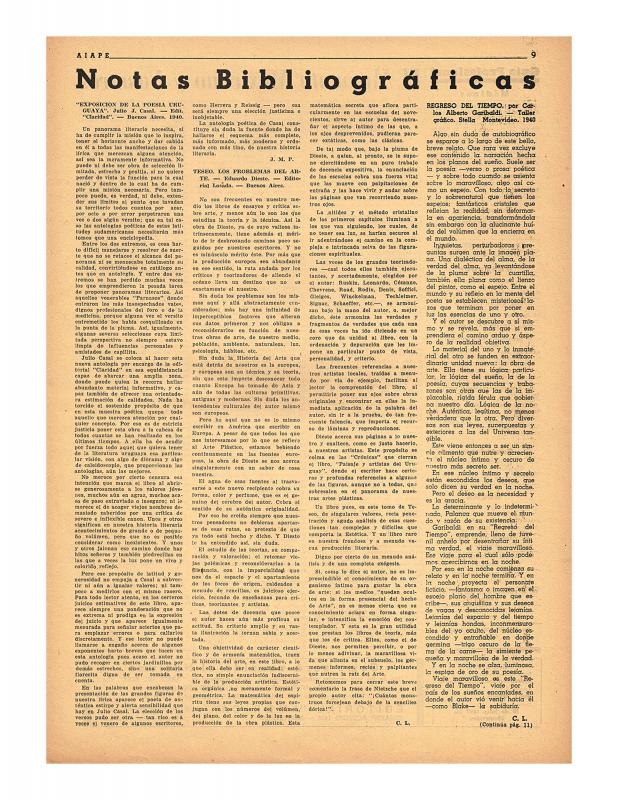Removedor magazine was founded in 1945 to counter the barrage of criticism from local Montevideo critics after Joaquín Torres-García was awarded the Gran Premio del Salón Nacional in 1944. Torres-García had just finished working with a group of students to paint the murals at the Hospital Saint Bois, and had published his most important book, Universalismo Constructivo. Sarandy Cabrera and Guido Castillo took turns writing the editorials for Removedor; both were staunch supporters of the maestro Torres-García and his Constructive Universalism. The AIAPE, for its part, was a prestigious publication that had been circulating in intellectual circles for eleven years and was known for its coverage of aesthetic and political conversations. The document “AIAPE, la víbora y Nadie” refers to an anonymous article in AIAPE (3rd period N° 1, September 1947, page 8) that harshly criticized the TTG (Taller Torres-García) and its second exhibition, the 38th since the group began its group events. The author of the critique discusses the homogenous and repetitive style of the paintings and wonders why Torres-García did not try to train his students to develop skillful techniques, instead of attempting “tricks” whose philosophical and pedagogical underpinnings they did not understand. The TTG’s 38th exhibition opened at the Ateneo in Montevideo on July 28, 1947. It was a tribute to the maestro Torres-García’s 73rd birthday, and included the works of 44 artists, including Manuel Aguiar, Julio Alpuy, Elsa Andrada, Daymán Antúnez, Sergio de Castro, José Gurvich, Anhelo Hernández, Nelsa Solano Gorga, Julio Mancebo, Francisco Matto, Jonio Montiel, Manuel Pailós, Américo Spósito, and Torres-García’s sons Augusto Torres and Horacio Torres.
It should also be noted that (probably, according to the AIAPE’s review) the artist who painted portraits in rural areas and sold them on the spot was Daymán Antúnez.
Faced with the spread of fascism, many intellectuals in the Río de la Plata region, especially those who were members of the PCU (Partido Comunista Uruguayo), adhered to the guidelines laid down by the Comintern (via “popular fronts”) and, as had been done in Buenos Aires the previous year, founded the AIAPE (Agrupación de Intelectuales, Artists, Periodistas y Escritores) in Montevideo. This group and its homonymous journal AIAPE replaced the CTIU (Confederación de Trabajadores Intelectuales de Uruguay) and its publication Movimiento. The AIAPE groups that were founded in various Latin American countries created a regional network of intellectuals and artists—which was originally formed in Argentina in 1935 at the urging of Aníbal Ponce (1898–1938)—whose goal was to combat the cultural decline caused by conservative and pro-fascist policies. The AIAPE groups operated in several Latin American countries, in different circumstances but driven by similar goals, with the support of regional Communist Parties, all of which were aligned with the USSR. The AIAPE journal’s efforts to bring together large groups of intellectuals to oppose the authoritarian measures in Uruguay—the 1933 coup d’état that brought the country under the thumb of the Gabriel Terra dictatorship and its fascist ideals—reflected the importance of the magazine. It underscored the association’s unconditional support of Republican Spain, thus expressing the solidarity of Uruguayan intellectuals who opposed the rise of classist and racist authoritarianism in Europe and the Americas.
[As complementary reading, see the ICAA digital archive for the following articles published in AIAPE: by Joaquín Torres-García “La exposición. [Amigos de España]” (doc. no. 1191197), “El Arte de Arzádum” (doc. no. 1223148), “El arte mejicano” (doc. no. 1225519), and “El arte de David Alfaro Siqueiros” (doc. no. 1238628); by Cipriano S. Vitureira “1er Salón Municipal de Artes Plásticas/Su contenido artístico” (doc. no. 1184568), “La libertad en Portinari” (doc. no. 1225346), “La pintura en el V Salón de Otoño” (doc. no. 1225672), “VIII Salón Nacional de Bellas Artes” (doc. no. 1211227), and “La pintura de Miguel Angel Pareja” (doc. no. 1223795).
See also by Justino Zavala Muniz “El artista y el Estado” (doc. no. 1216580); by Atahualpa del Cioppo “Arte simple” (doc. no. 1223119), “El jurado designado de la Comisión Nacional de Bellas Artes no contempla las aspiraciones de los plásticos” (doc. no. 1225373), and “Página de crítica y polémica. Las exposiciones” (doc. no. 1221503); by Carmelo de Arzádum “Las artes plásticas de 1936 a 1939” (doc. no. 1224706), and “Urruchúa (doc. no. 1224405); by Roberto Ibáñez (editor in chief), “Demetrio Urruchúa con Nosotros” (doc. no. 1223661), “Las exposiciones. Las remuneraciones artísticas” (doc. no. 1225449), “Los jurados del próximo Salón Nacional de Bellas Artes” (doc. no. 1225548), “La ética social del artista” (doc. no. 1223962), and “Plataforma de aspiraciones de los plásticos de la A.I.A.P.E.” (doc. no. 1225398); by Emilio Oribe “Michelena - Escultor” (doc. no. 1223386), and “Cultura en el orden internacional” (doc. no. 1223996); by Homero Clerici “Los estudiantes plásticos y la AIAPE [Agrupación de Intelectuales, Artistas, Periodistas, y Escritores]” (doc. no. 1225286); by Felipe Novoa “El grabador Carlos González” (doc. no. 1223870); by Gisleno Aguirre “La nueva Asociación de Artistas Plásticos” (doc. no. 1225166); by Orestes Baroffio “Objeto y Significación de Un Salón de Arte” (doc. no. 1210990); by Jesús Betancourt Díaz “Temas de discusión sobre la cultura Americana” (doc. no. 1225812); by Antonio Miguel Grompone “Cultura de liberación” (doc. no. 1226424); by Juvenal Ortiz Saralegui “Fuera del Salón Oficial” (doc. no. 1221528), and “Los jurados de los salarios artísticos de 1935 atentó contra la cultura” (doc. no. 1225596); by Leónidas Spatakis “Una opinión sobre el 6° Salón Nacional” (doc. no. 1225722); by Sofía Arzarello “Reconocimiento a Élie Faure” (doc. no. 1223458); by Marcel Gromaire “Sobre la querella del realismo” (doc. no. 1225636); and by C. L. “Teseo: los problemas del arte” (doc. no. 1223765).

